Numerical and experimental investigation of heat transfer enhancement in double tube heat exchanger using nail rod inserts
- PMID: 38670963
- PMCID: PMC11053124
- DOI: 10.1038/s41598-024-59085-5
Numerical and experimental investigation of heat transfer enhancement in double tube heat exchanger using nail rod inserts
Abstract
The Double-tube heat exchanger (DTHX) is widely favored across various industries due to its compact size, low maintenance requirements, and ability to operate effectively in high-pressure applications. This study explores methods to enhance heat transfer within a DTHX using both experimental and numerical approaches, specifically by integrating a nail rod insert (NRI). A steel nails rod insert, 1000 mm in length, is introduced into the DTHX, which is subjected to turbulent flows characterized by Reynolds numbers ranging from 3200 to 5700. Three different pitches of NRI (100 mm, 50 mm, and 25 mm) are investigated. The results indicate a significant increase in the Nusselt (Nu) number upon the insertion of nail rods, with further improvements achievable by reducing the pitch length. Particularly noteworthy is the Nu number enhancement ratio for the 25 mm pitch NRI, which is 1.81-1.9 times higher than that for the plain tube. However, it is observed that pressure drop increases in all configurations with NRI due to heightened turbulence and obstruction by the NRI. Among the various pitch lengths, the 25 mm pitch exhibits the highest pressure drop values. Moreover, exergy efficiency is found to improve across all cases with NRI, corresponding to increased heat transfer, with the 25 mm pitch length showing a remarkable 128% improvement. Numerical analysis reveals that the novel insert enhances flow turbulence through the generation of secondary flows, thereby enhancing heat transfer within the DTHX. This study provides a comprehensive analysis, including temperature, velocity, and pressure drop distributions derived from numerical simulations.
Keywords: CFD; Double tube heat exchanger; Exergy efficiency; Heat transfer enhancement; Nails rod insert.
© 2024. The Author(s).
Conflict of interest statement
The authors declare no competing interests.
Figures


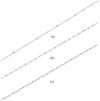




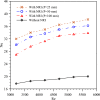




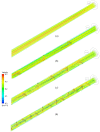


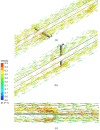

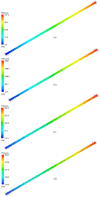
References
-
- Marzouk SA, Abou Al-Sood MM, El-Said EMS, Younes MM, El-Fakharany MK. Experimental and numerical investigation of a novel fractal tube configuration in helically tube heat exchanger. Int. J. Therm. Sci. 2023;187:108175. doi: 10.1016/j.ijthermalsci.2023.108175. - DOI
-
- Marzouk SA, Abou Al-Sood MM, El-Said EM, Younes MM, El-Fakharany MK. Evaluating the effects of bifurcation angle on the performance of a novel heat exchanger based on contractual theory. Renew. Energy. 2023;219:119463. doi: 10.1016/j.renene.2023.119463. - DOI
-
- Ameur H, Sahel D, Menni Y. Enhancement of the cooling of shear-thinning fluids in channel heat exchangers by using the V-baffling technique. Therm. Sci. Eng. Prog. 2020;18:100534. doi: 10.1016/j.tsep.2020.100534. - DOI
-
- Mellal M, Benzeguir R, Sahel D, Ameur H. Hydro-thermal shell-side performance evaluation of a shell and tube heat exchanger under different baffle arrangement and orientation. Int. J. Therm. Sci. 2017;121:138–149. doi: 10.1016/j.ijthermalsci.2017.07.011. - DOI
LinkOut - more resources
Full Text Sources
Research Materials
Miscellaneous

